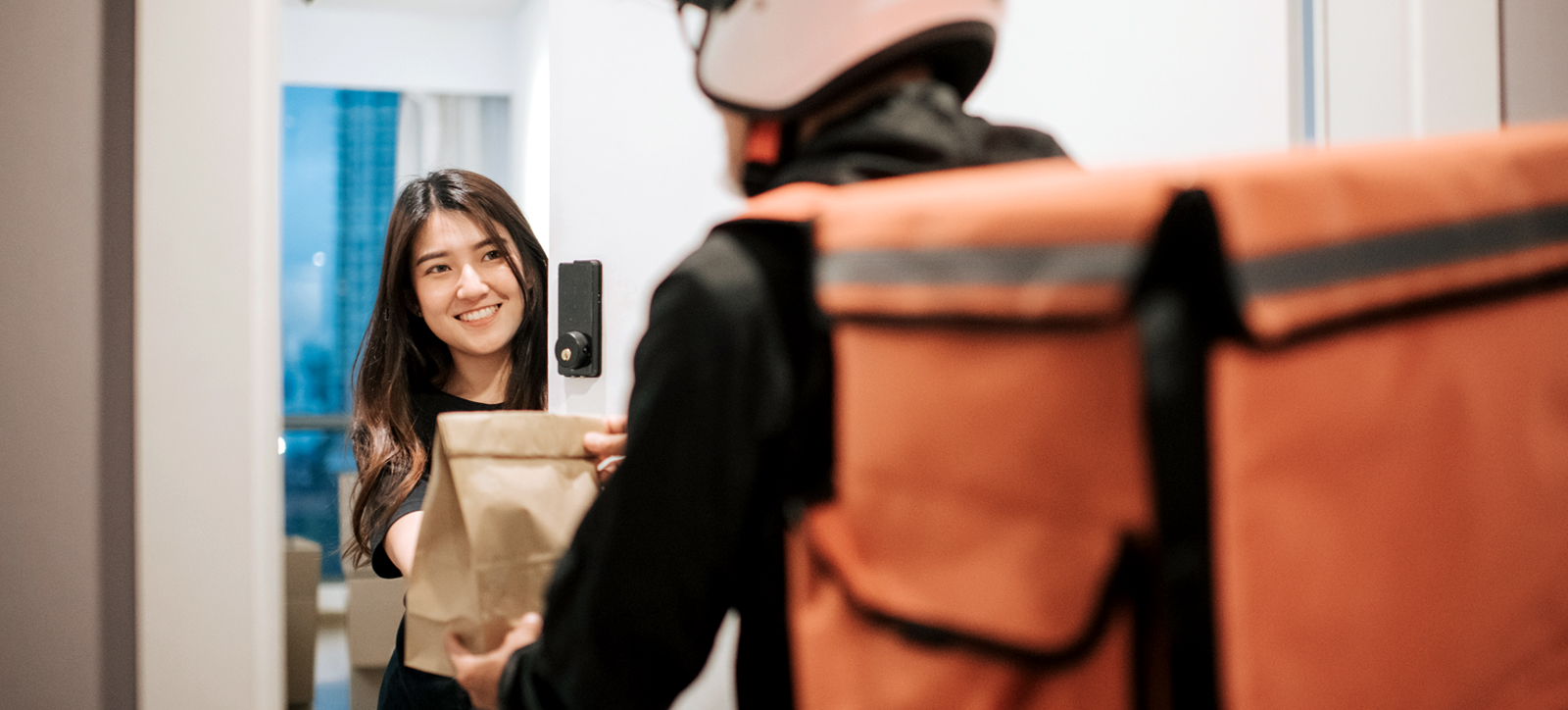
Covid rapidly accelerated the overall trend towards internet ordering of all retail sales with UK online purchases approaching 30 per cent in 2021. With a strong trend towards home delivery this has also created an opportunity for “quick” grocery delivery services via apps such as Gorillas and Getir.
Online purchases from food stores in the UK reached an all-time high of over 15.4% in February 2021 during the pandemic. This drove the big four grocers in the UK – Tesco, Sainsbury, Morrisons and Asda – to invest in internet deliveries simply to retain trade. Online grocery sales have since reduced to 13% of total grocery sales, although 30% of adults still make some online grocery purchases.
But online delivery services are not all good news for the supermarkets. Margins are far lower as they have to take in extra elements. For instance, staff must walk down supermarket aisles and select items for online orders before adding them to crates. This is a more expensive model than in-store sales in which the customer does most of the work, choosing items and taking them to the checkout.
A consequence of rising internet sales is that the big grocery chains must continue to pay the costs for their shops around the country where dwindling numbers of purchases are being made. They are also working in increasingly competitive markets. Over the last ten years, profits of the big four supermarket chains have more than halved as a consequence of increased low-margin internet sales and the growth of the German stores Aldi and Lidl.
Fast turnaround times
Fast home grocery delivery firms continued to pop up during the pandemic. As well as Gorillas and Getir, other operators include GoPuff, Jiffy, Zapp, Dija and Weezy. They all operate from local “dark” stores (distribution centres for online shopping) with a limited range of groceries, offering delivery times ranging from ten minutes to under an hour.
The objective is to cater to impulse buyers with small, spur-of-the-moment deliveries such as eggs or beer. These are picked up locally and delivered by fleets of cyclists, electric scooters or motorbike riders.
This market has already rapidly become crowded and hyper-competitive, with many providers offering highly discounted introductory offers. One issue is that an individual customer can probably exist on incentives over many months by rotating between suppliers.
It is also difficult to tell whether such services will generate profits in the long run. Like much of the gig economy, the jury is still out. Ride-hailing firms such as Uber and Lyft have been running for 13 years and are still not even threatening to break even. Takeaway delivery food firms such as Deliveroo and Uber Eats continue to experience similar economics.
Strategically one problem with the industry is its low-entry barriers which mean it is easy for new competitors to keep down the profits.
Some early investors are looking for for these fledgling grocery delivery companies to float on the stock market so that they can cash out before it is known whether the model will ever make money as was the case with Uber, Lyft and Deliveroo.
Clearly providers are attempting to maximise their customer base and buying power with suppliers to try and build a long-term operation. Yet once customers have to pay the prices necessary to make such a business profitable, in view of all the costs involved, it remains to be seen whether it will be viable, especially with inflation putting pressure on shoppers to cut back.
Groceries and the environment
Home delivery of online market orders has generally resulted in far more single-item deliveries by vans to where people live.
The main source of carbon emissions are buildings and indeed shops, which if replaced by larger scale distribution and warehouses (which are not heated) may well reduce. However both are in operation currently, although there has been some recent reduction in the number of shops.
Some operators, like Getir, claim to use electric bikes or scooters to pick up stock from their local “dark” stores and to make deliveries. But because of the small size of these stores, there have to be frequent deliveries from a larger warehouse, which adds an extra layer to the distribution structure.
Most of these new entrants are unlikely to survive the next couple of years due to the extent of competition and high levels of inflation.
Once consumers have to pay the full cost of the services, they may reconsider ordering and do a bigger shop instead. Wage rates for unskilled workers are also rising rapidly, driving up the cost oft he service.
As a result, these services are only likely to work in areas with high-density affluent populations in big cities like London and Manchester, they are only just starting to be trialled more widely.
Currently these services are largely funded by venture capital. But without profits, funders may quickly find these operations less appealing. Overall there are numerous challenges to the long-term future of fast grocery deliveries.
The article was originally published by The Conversation.
John Colley is Professor of Practice and of Leadership and Associate Dean of Warwick Business School. He is a former MD of a FTSE 100 company.
He teaches Leadership, Strategic Thinking, Enhancing Business Performance Through Governance and Mergers and Acquisitions of the Full Time MBA, Executive MBA, and Distance Learning MBA programmes.




 X
X Facebook
Facebook LinkedIn
LinkedIn YouTube
YouTube Instagram
Instagram Tiktok
Tiktok